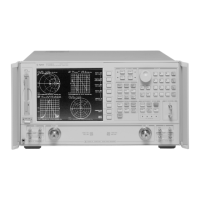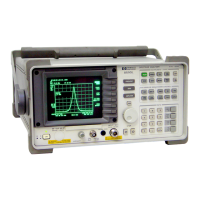Chapter 2 2-67
System Verification and Performance Tests
Agilent 8753ES System Verification and Performance Tests
18.Set the step attenuator to 0 dB.
19.Press .
20.Press . Write the mean value (which appears on the
analyzer’s display) in the column marked “Real Part” in the performance test record.
Note that the analyzer will display units as mU, µU, or nU, which are abbreviations for
10
−
3
units, 10
−
6
units, and 10
−
9
units, respectively.
21.Press . Write the mean value (which appears on the analyzer’s display) in
the column marked “Imaginary Part” in the performance test record. Note that the
analyzer will display units as mU, µU, or nU, which are abbreviations for 10
−
3
units,
10
−
6
units, and 10
−
9
units, respectively.
22.Repeat steps 19 through 21 for each setting of the step attenuator as written in the
performance test record.
23.For each pair of real and imaginary parts calculate the value given by the formula:
10 log
10
[(Real Part)
2
+ (Imaginary Part)
2
]. Write the result in the performance test
record in the “Test Port Measurement” column (column “G”).
24.Calculate the dynamic accuracy for each attenuator setting by using the formula:
|G − F| (the absolute value of the difference between the values in column “G” and
column “F”).
Power Meter Calibration for Test Port 1
25.Zero and calibrate the power meter. (Refer to the power meter manual for details on
this procedure.)
26.Connect the equipment as shown in Figure 2-34.
Format

